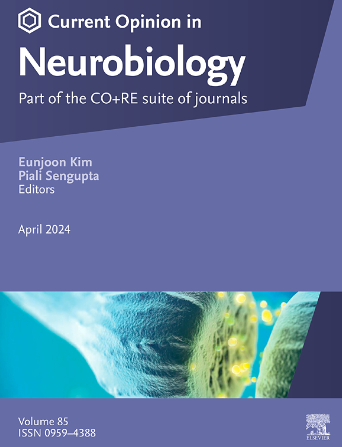完善吸毒成瘾的回路:腹侧苍白球
IF 4.8
2区 医学
Q1 NEUROSCIENCES
引用次数: 0
摘要
腹侧苍白球是基底神经节内的一个重要结构,负责调节奖赏和动机过程。它位于运动和边缘结构的交界处,其功能对药物使用障碍的发展和维持至关重要。长期使用药物会诱发该结构的神经可塑性事件,导致VP神经元活动和突触通信发生长期变化。此外,VP 内不同的神经元群会以相反的方向驱动寻求毒品的行为。这篇综述探讨了VP作为奖赏、动机和厌恶中心的作用,将其确立为药物使用障碍病理生理学的一个重要因素。本文章由计算机程序翻译,如有差异,请以英文原文为准。
Refining the circuits of drug addiction: The ventral pallidum
The ventral pallidum is a prominent structure within the basal ganglia, regulating reward and motivational processes. Positioned at the interface between motor and limbic structures, its function is crucial to the development and maintenance of substance use disorders. Chronic drug use induces neuroplastic events in this structure, leading to long-term changes in VP neuronal activity and synaptic communication. Moreover, different neuronal populations within the VP drive drug-seeking behavior in opposite directions. This review explores the role of the VP as a hub for reward, motivation, and aversion, establishing it as an important contributor to the pathophysiology of substance use disorders.
求助全文
通过发布文献求助,成功后即可免费获取论文全文。
去求助
来源期刊

Current Opinion in Neurobiology
医学-神经科学
CiteScore
11.10
自引率
1.80%
发文量
130
审稿时长
4-8 weeks
期刊介绍:
Current Opinion in Neurobiology publishes short annotated reviews by leading experts on recent developments in the field of neurobiology. These experts write short reviews describing recent discoveries in this field (in the past 2-5 years), as well as highlighting select individual papers of particular significance.
The journal is thus an important resource allowing researchers and educators to quickly gain an overview and rich understanding of complex and current issues in the field of Neurobiology. The journal takes a unique and valuable approach in focusing each special issue around a topic of scientific and/or societal interest, and then bringing together leading international experts studying that topic, embracing diverse methodologies and perspectives.
Journal Content: The journal consists of 6 issues per year, covering 8 recurring topics every other year in the following categories:
-Neurobiology of Disease-
Neurobiology of Behavior-
Cellular Neuroscience-
Systems Neuroscience-
Developmental Neuroscience-
Neurobiology of Learning and Plasticity-
Molecular Neuroscience-
Computational Neuroscience
 求助内容:
求助内容: 应助结果提醒方式:
应助结果提醒方式:


